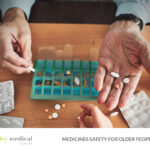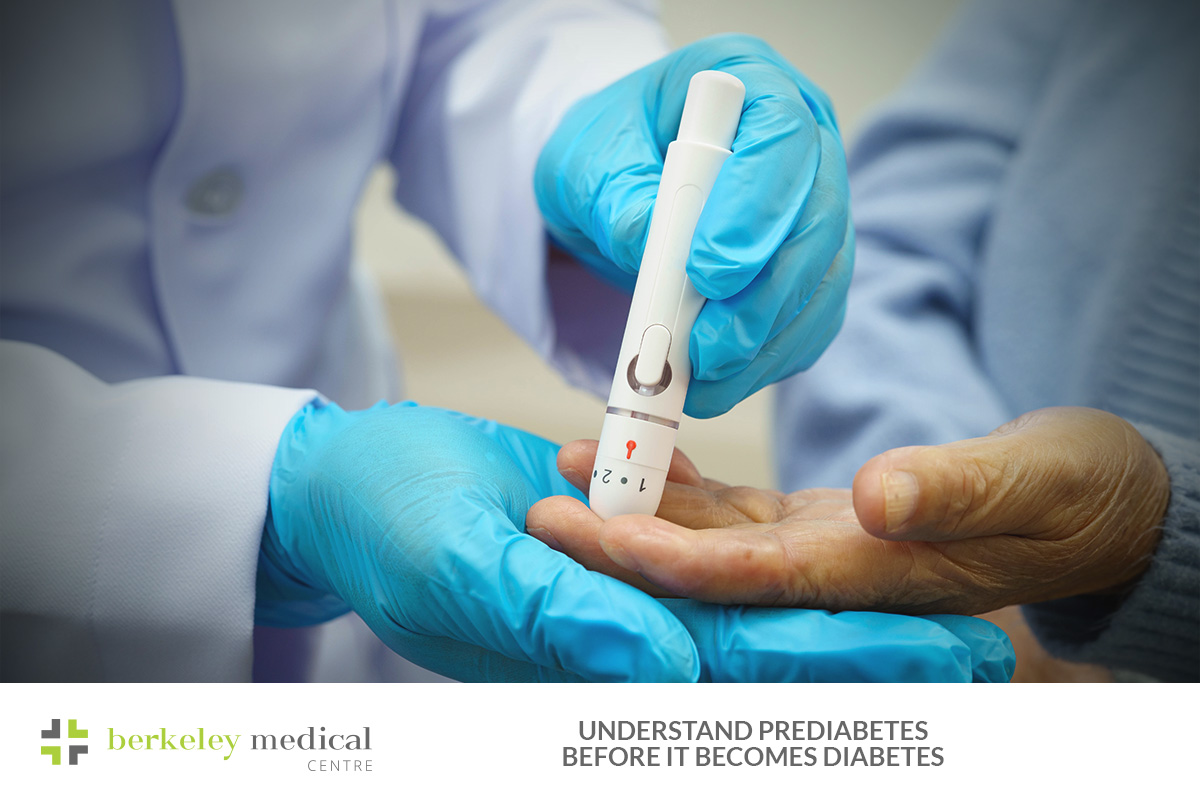Prediabetes is a common but often overlooked condition that affects millions of Australians. It means your blood sugar levels are higher than normal but not high enough to be diagnosed as type 2 diabetes. Most people with type 2 diabetes develop prediabetes first often without even realising it.
What Is Prediabetes?
Prediabetes occurs when your body starts to develop insulin resistance, which makes it harder for insulin to move glucose (sugar) out of your bloodstream and into your cells.
Over time, your body may not produce enough insulin to overcome this resistance, causing your blood sugar levels to rise. If left untreated, it often progresses to type 2 diabetes, a condition that increases your risk of heart disease, stroke, kidney failure and other serious complications.
Key facts:
- Prediabetes means your blood sugar is higher than normal but not yet diabetic
- It is a major risk factor for type 2 diabetes and cardiovascular disease
- Early intervention can prevent or reverse prediabetes
What Causes Prediabetes?
The exact cause of prediabetes can vary, but it usually develops due to a combination of lifestyle and genetic factors. Most people with are overweight or have low levels of physical activity, which contributes to insulin resistance.
Common Risk Factors for Prediabetes:
- Being overweight or obese (especially around the abdomen)
- Aged 45 years or older
- Family history of type 2 diabetes
- High blood pressure or cholesterol
- Low HDL (good cholesterol) or high triglycerides
- History of gestational diabetes or polycystic ovary syndrome (PCOS)
- Sedentary lifestyle
- Certain ethnicities, including Aboriginal and Torres Strait Islander, South Asian, Middle Eastern, Pacific Islander and African backgrounds
If you have any of these risk factors, your GP may recommend a diabetes screening test.
How Is Prediabetes Diagnosed?
Doctors use the same blood tests to diagnose prediabetes and type 2 diabetes. However, it falls within a specific range just below diabetic levels.
The three most common tests are:
1. Fasting Blood Glucose Test
2. Oral Glucose Tolerance Test (OGTT)
3. HbA1c Blood Test (Haemoglobin A1c)
These tests give your doctor a clear picture of how your body is processing sugar and whether you are at risk of developing diabetes.
What Are the Symptoms of Prediabetes?
Most people experience no symptoms at all, which makes regular screening even more important. In some cases, early signs may appear as your blood sugar levels increase.
Possible Early Symptoms of Prediabetes:
- Increased thirst
- Frequent urination
- Unexplained fatigue
- Blurred vision
- Slow-healing cuts
- Frequent infections (especially skin or yeast infections)
If you notice these symptoms, it is essential to speak to your GP for further testing.
Why Prediabetes Matters: The Risks of Ignoring It
Ignoring it can have serious consequences. Research shows that up to 70% of people with prediabetes will eventually develop type 2 diabetes without lifestyle changes. Even before diabetes sets in, prediabetes increases your risk of:
- Heart disease
- Stroke
- High blood pressure
- Kidney problems
- Nerve damage
Taking action early can prevent disease progression and reduce long-term health risks.
How Long Does it Last?
Prediabetes can last for years or just months depending on how you respond. With lifestyle changes and support from your GP, you can:
- Reverse prediabetes
- Maintain healthy blood sugar levels
- Prevent or delay the onset of type 2 diabetes
On the other hand, without intervention, prediabetes often progresses to type 2 diabetes sometimes within just 12 months.
Can You Reverse Prediabetes?
Yes and many people do. Studies show that people who lose just 5–7% of their body weight and increase physical activity can reduce their risk of developing type 2 diabetes by up to 58%.
How to Reverse Prediabetes Naturally:
1. Lose Excess Weight
Even a modest weight loss of 5–10 kg can significantly improve insulin sensitivity.
2. Exercise Regularly
Aim for at least 30 minutes a day, five days a week. Walking, swimming and strength training all help manage blood sugar.
3. Eat a Balanced Diet
Focus on:
- Whole grains and vegetables
- Lean protein
- Healthy fats (e.g. olive oil, avocado, nuts)
- Minimising sugar, processed foods and sugary drinks
4. Monitor Your Progress
Regular blood sugar checks and follow-up with your GP can help track your improvement.
5. Consider Medical Support
If lifestyle changes are not enough, your GP may recommend metformin or weight-loss medications to help prevent progression to diabetes.
When Should You See a Doctor?
If you have risk factors or symptoms of prediabetes, do not wait. Early diagnosis gives you a chance to make meaningful changes. See your GP if:
- You’re over 45 and have not had a blood sugar test recently
- You have a family history of diabetes
- You’re overweight or have high blood pressure
- You have had gestational diabetes or PCOS
- You’re ready to start a prevention plan for diabetes
Conclusion: Take Action Before Diabetes Develops
Prediabetes is a warning, not a life sentence. By making healthy lifestyle changes now, you can reverse insulin resistance, reduce your blood sugar levels and avoid diabetes altogether.
At Berkeley Medical Centre in Brisbane, we support you every step of the way. Whether you are newly diagnosed with prediabetes or just want to check your risk, our GPs can guide you with personalised, evidence-based care.
How Berkeley Medical Centre Can Help
We offer comprehensive support for people with prediabetes in Brisbane and surrounding areas:
- Blood sugar testing
- Risk assessments for diabetes and heart disease
- Personalised weight management plans
- Lifestyle and dietary coaching
- Medication guidance Ongoing monitoring and prevention strategies
We are here to help you stay healthy now and in the future.







